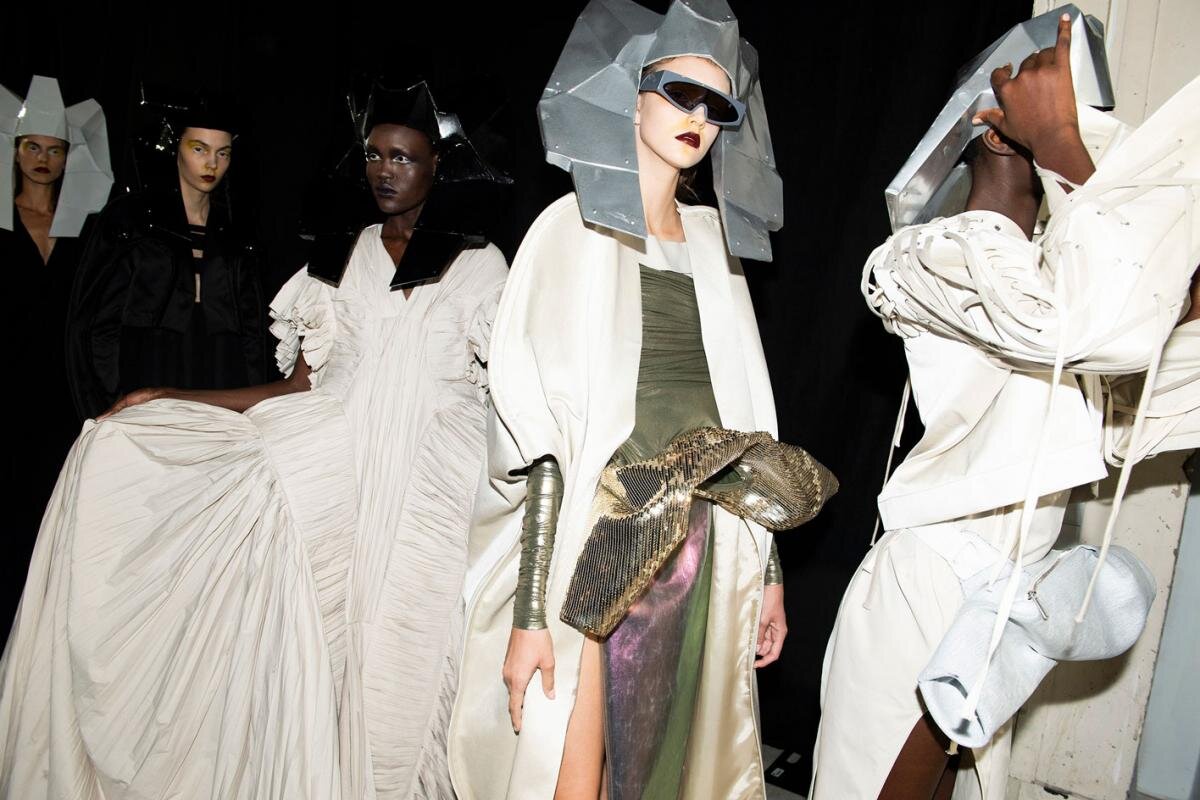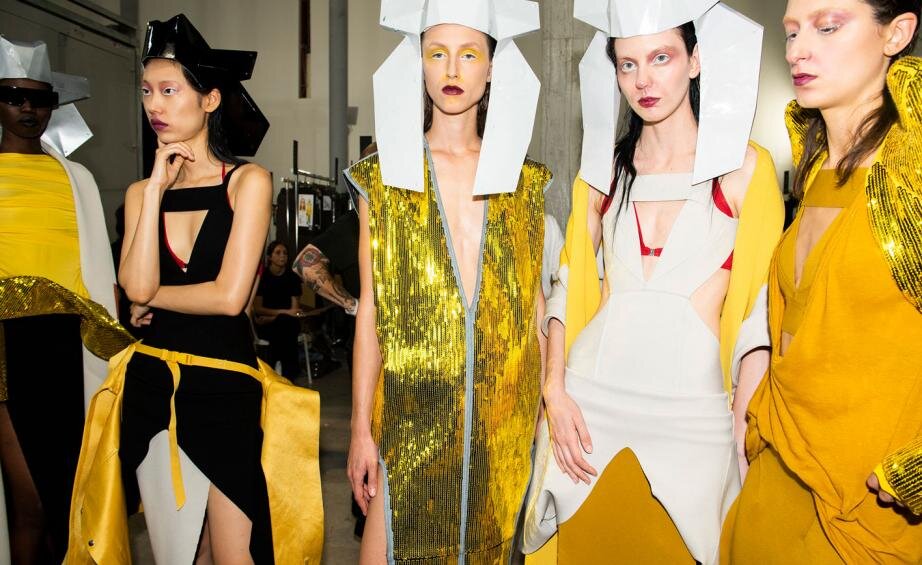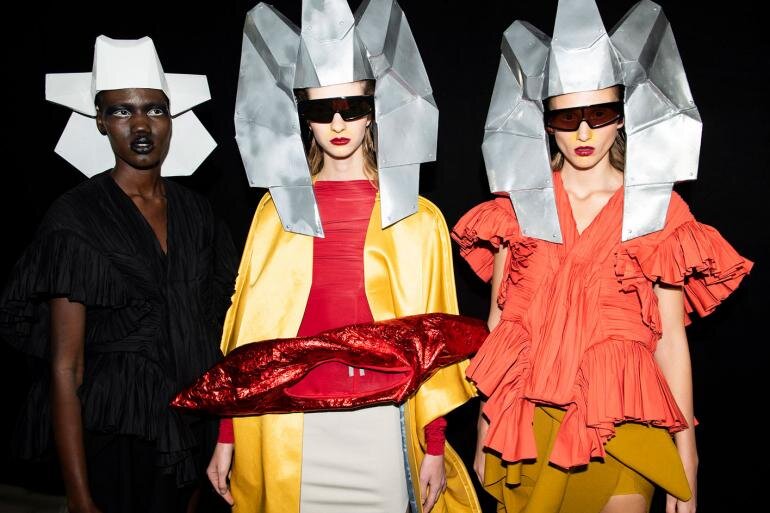Early last month, I bought my first Vogue México. Truthfully, it had been ten years since I last flipped the pages of the prominent fashion magazine of my country (I wasn’t motivated by translated articles and reissued photoshoots), but what finally drew me to the publication this time was its six unique covers for October commemorate Vogue México’s 20-year anniversary and, according to the editors, are standing ovations to the female protagonists of Mexico’s modern history. Naturally, the publication made me contemplate the global state of the fashion industry in relation to diversity, inclusion, and culture.
I’ve learned that writing about culture can be quite intimidating as there’s certainly a lot to cover, especially concerning Mexico and Hispanism. Despite my hesitation, I deem this subject important to discuss as misappropriation of our cultural tapestry keeps occurring in fashion. Note the careful mention of ‘misappropriation’ rather than ‘appropriation.’
A recent psychological deconstruct of my own sartorial choices made me realize that I am in fact partaking in the latter - appropriation. My wardrobe will tell you that I have an affinity for British-influence staples such as a vintage Harris Tweed, Doc Martens (in need of polishing), and that I probably own too many Breton shirts. All this as I actively search the internet for a Japan-affiliated Sukajan and listen to Eric Clapton’s cover of “I Shot The Sheriff.”
These choices mirror my upbringing in the Mexican capital during the 90s and 2000s, the consequences of an accelerated globalization, an early exposure to corporate advertising, and the ideologies I’ve outlined for myself, along with the ones that associate me with those of my generation. I’ve found comfort in appropriating elements from different cultures into my life as a way of coexisting in an increasingly multicultural society. And simply, because I’m drawn to them.
This melting-pot dressing made me realize that one of the main current struggles with defining culture is that the term implies artificial boundaries, when in fact, many groups share common history, beliefs, and practices. Overtime, we modify and challenge these meanings as we engage in new contexts, exchange ideas, styles, and traditions.
Maria Grazia Chiuri’s Christian Dior Cruise 2019 collection inspired by Mexican escaramuza charras.
And so my stance on cultural appropriation, such as Christian Dior’s infamous Cruise 2019 collection, above, inspired by escaramuza riders, female rodeo riders from Mexico during the years of the Mexican Revolutionary War, isn’t entirely negative. I value my culture so much that I understand why it becomes a pool of inspiration for creative individuals. Plus, I think we can agree that fashion remains a powerful podium for our complex, cultural identity to exist in the collective consciousness. And in the case of Maria Grazia Chiuri’s collections, she tapped into a period of history which was inspiring because of what it represented, female strength and the fight for freedom.
I predict that most won’t agree with me on the above, which could be said to be illusory but, quite frankly, I saw more negative racial outrage from Mexican nationals against Mixtec actress Yalitza Aparicio back in January 2019 when she appeared on the cover of Vogue Mexico wearing a dress from this exact Dior collection; a cautionary reminder that discrimination feeds cultural misappropriation.
Yalitza Aparicio in Vogue Mexico for their January 2019 issue.
With globalization, the rise of third-culture kids, and a growing number of people with mixed nationality, race or ethnicity, it is naive and futile to think that cross-cultural expression is entirely harmful or that the only cultural inspiration we’re allowed to reference is the one we were born into. After all, it’s only human nature to connect with a mood, an aesthetic based on individual personality, and to interpret the world around us and actively create meaning through interaction.
“With globalization, the rise of third-culture kids, and a growing number of people with mixed nationality, race or ethnicity, it is naive and futile to think that cross-cultural expression is entirely harmful or that the only cultural inspiration we’re allowed to reference is the one we were born into.”
This new reality was apparent at Rick Owens’ SS20 womenswear collection (below). By exploring his heritage and connection with members of the Mexican community of East L.A. while growing up, Owens showed his special take on culture through the eyes of an insider, slash-outsider, slash-a-now-expat. His ability to refrain from outdated stereotypes on the runway made for a successful carriage of a political defiant manifesto. “Instead of questioning ourselves, wouldn't it be better to create, act on a reality that is not given to the one who contemplates it, but to the one who is able to immerse itself in it?” asked famed Mexican poet, Octavio Paz back in his 1950 book The Labyrinth of Solitude.
Perhaps the root of the matter isn’t who does the cultural appropriation, but rather when and how will the appropriator return what was taken. But it’s unfortunate when fashion designers still fail to engage with the communities that inspired their collections and think it’s OK to simply borrow or downright rip-off. Cultural misappropriation keeps happening due to the notion that culture is something that belongs in the past, therefore open for acquisition, and then reduced to a money-making, mainstream trend: popular one day, worn out the next.
Wes Gordon at Carolina Herrera comes to mind. I believe the use of Mexican art on his collection to be visually rich, modern, and aligned with the company’s Hispanic heritage. But it seems that the designer was gearing more towards consuming a particular aesthetic, rather than creating structural changes to traditional fashion practices, when he used the work of indigenous artisans for his Resort 2020 line in efforts to celebrate Latin joie de vivre, or alegria de vivir, Mexican culture, and haute couture craftsmanship all in one.
The animal and floral designs of this look from Wes Gordon’s collection are in reality the work of 87-year old Josefina Jose Tavera, who lives in an impoverished village in the municipality of Tenango de Doria, hasn’t received credit or an apology.
Naturally, accusations fluctuated from indignation to insults from many, including the community of Tenango de Doria in the state of Hidalgo, one of the indigenous communities whose traditions Gordon borrowed from. Modern society chooses to forget that cultural art has acted as a coping mechanism for marginalization, an issue prevalent across Mexico and the rest of the Americas. It’s a way to pass one’s traditions and skills to next generations and maximize chances of survival.
The intricate and painstaking Tenango embroidery technique, is one of several native traditions Wes Gordon used in his collection for Carolina Herrera.
"If it weren't for my hands, this work wouldn't exist!" exclaimed 87-year old Josefina Jose Tavera, in regard to the animal and floral designs of Look #23, which she created with her mother decades ago and continues to produce alongside her own daughter, Glafira Candelaria. The same design has been used on chairs designed by Louis Vuitton in collaboration with design studio Raw Edges, conveniently not available for sale in Mexico. Fashion labels that want to use the Tenango technique "should come to us," said 29-year-old Oliver Lopez, who runs his own small design shop out of his home. "They should bring us jobs," added Lopez to AFP.
The $18,000 Louis Vuitton chair made in collaboration with design studio Raw Edges is not available for sale in Mexico
Commodification of tradition is nothing new. It remains insensitive, but could be a valued practice considering that cultural lifespan, more often than not, depends on the production and consumption that allows it to grow beyond its place of origin. But before fashion can appropriate traditions, it must treat cultural borrowing like any other consensual creative collaboration.
Moreover, amid talks of multicultural acceptance, the industry has to recognize that cultural appropriation isn’t equivalent of diversity or inclusion, nor should it compromise cultural sustainability.
Only by recognizing its value, giving credit, and sharing the economy with claimed inspirational communities, will fashion savor the benefits of multiculturalism and well-intended homages won’t get cast off.




















As news of PSYKHE’s launch spreads, The Psychology of Fashion and PSYKHE’s founder Anabel Maldonado sat down with editors at Forbes and WWD to discuss the platform, the journey and why the world needs personalization powered by AI and psychology.